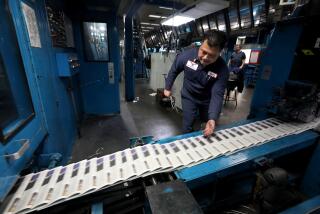Changes for Soviet Media
- Share via
As reported by your Moscow correspondent (Dec. 21), there is indeed a sense of panic among the publishers of the largest newspapers there, as they face the loss of governmental subsidies as of Jan. 2. Their spokesman is right: “No one will pay 8 rubles a copy”--the monthly total would almost equal the average worker’s salary.
There are two main reasons for their inability to compete without governmental subsidies, neither of which are mentioned. One of them is the end of a system that guaranteed enormous circulations by obliging all governmental bodies, organizations, libraries and “all civic-minded citizens” to subscribe to these publications. This has changed--now a paper is bought voluntarily--and under these circumstances Pravda and others like it can no more compete with the new independent publications like Kuranty, Independent Gazette or Ommersant, than a horse-drawn cart could negotiate a high-speed freeway.
Before emigrating to the U.S. I worked for more than 20 years in Soviet publishing enterprises. I remember well the offices of Izvestia, Pravda and other “central” publications financed by the ruling apparatus. I recall the multistoried buildings filled with obsolete technologies and hundreds of workers whose work consisted of moving meaningless pieces of paper from one desk to another. This was the price paid for the “absence” of unemployment in the Soviet Union. The publications that appeared in Russia during the last few years started from scratch. They are housed in tiny offices, they have a minimal number of employees, but they are competitive in circulation and popularity.
The Los Angeles-based weekly Panorama, which we founded in 1980 and which is now the second-largest Russian-language publication in the U.S., has just 14 permanent employees. The New York-based daily has about 50. We have received a number of requests from Moscow to publish a special edition of Panorama there; the proposals suggest that a respectable profit could be made by selling it there, at present, for 1.5 rubles.
ALEXANDER POLOVETS, Editor-in-chief, Panorama, Los Angeles
More to Read
Sign up for Essential California
The most important California stories and recommendations in your inbox every morning.
You may occasionally receive promotional content from the Los Angeles Times.










